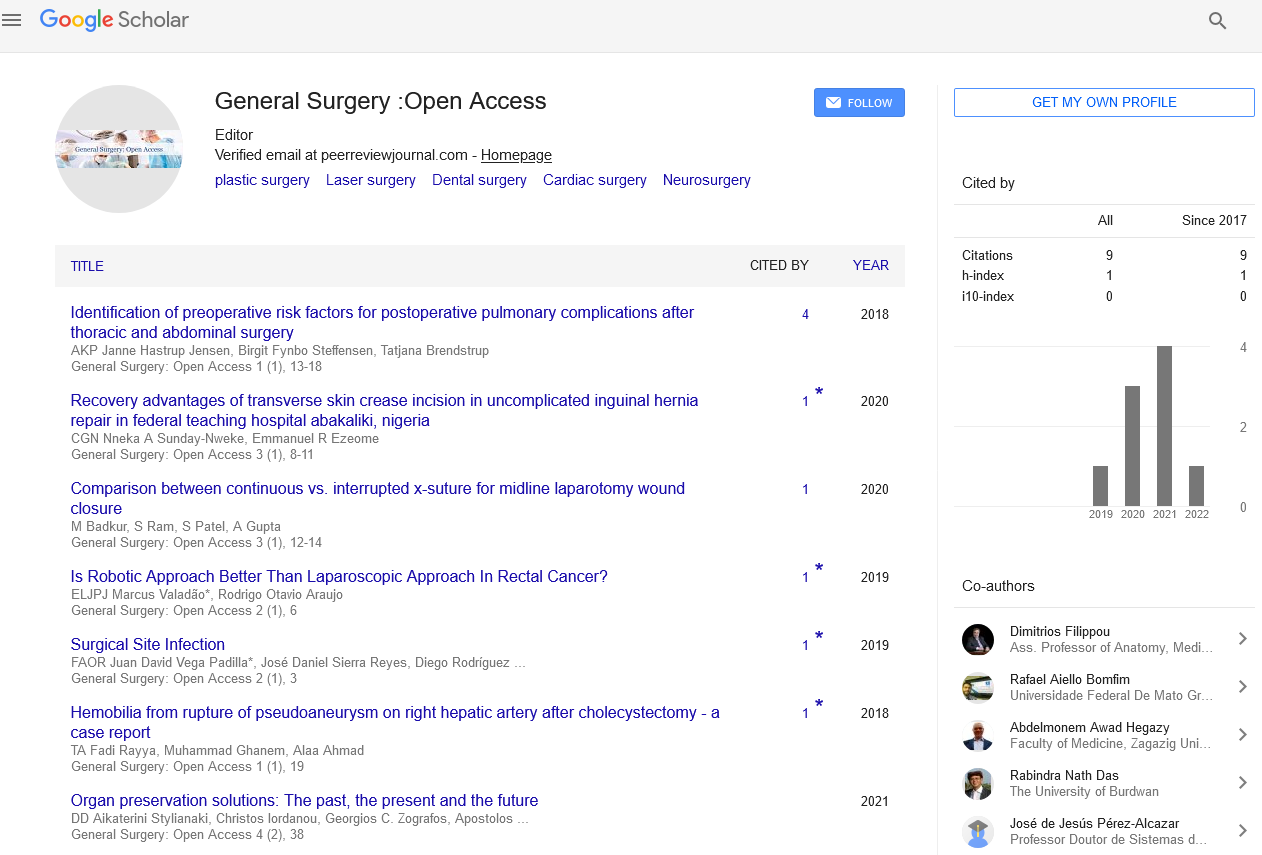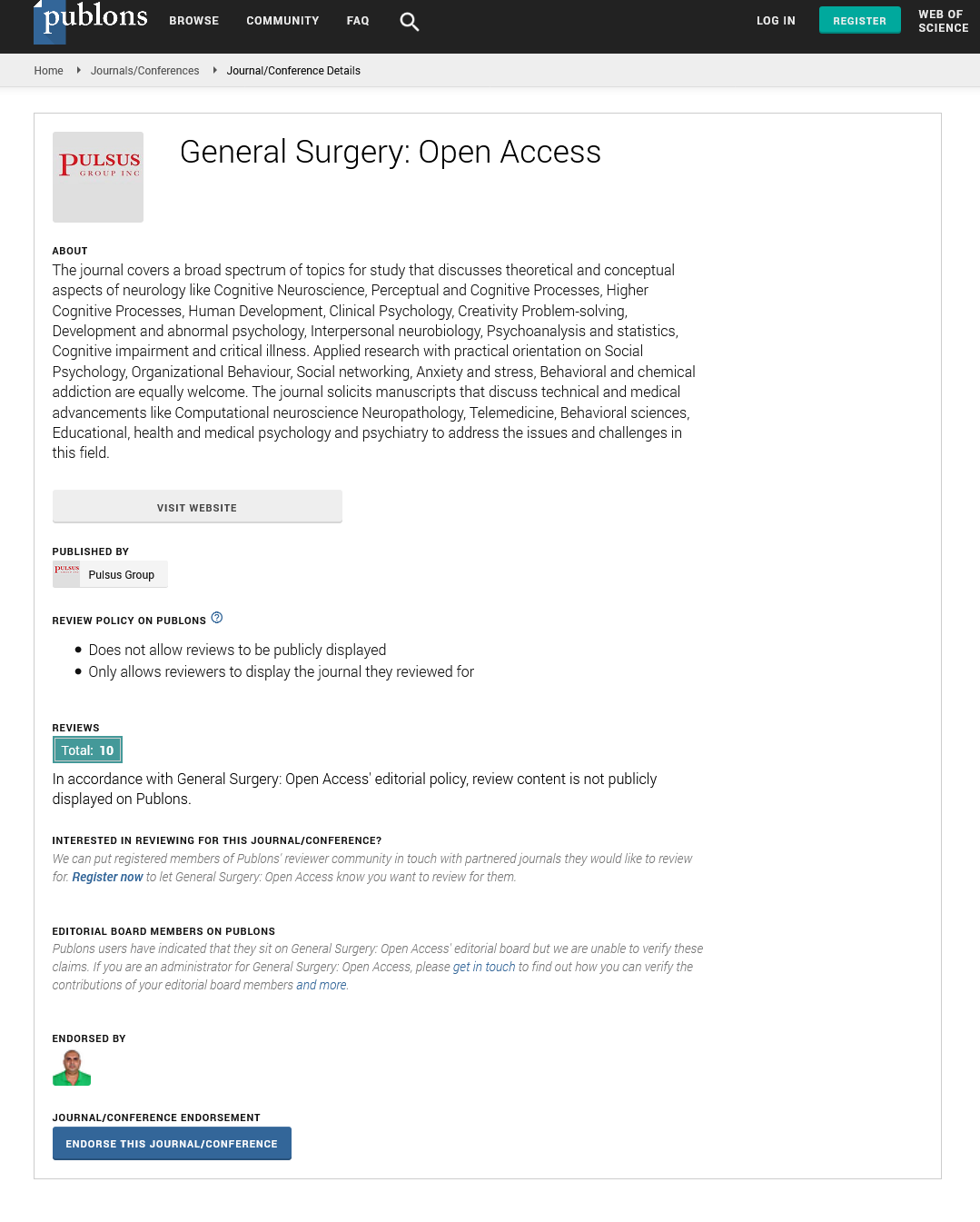
Sign up for email alert when new content gets added: Sign up
Prevention of post-operative complications of esophageal atresia in newborns
2nd International Conference on Physicians & Surgeons
January 20, 2022 | Webinar
Shukurali Eshkabilov
center of neonatal surgery at the Republican perinatal center, Uzbekistan
Posters & Accepted Abstracts: Gen Surg: Open Access
Abstract :
Statement of the Problem: Esophageal atresia (EA) is one of the most common congenital anomalies of esophagus, the surgical correction of which is one of the most important problems of neonatal surgery and anesthesiology. Gastroesophageal reflux (GER) is one of the most common complications during post-operation period, which is one of the factors leading to other surgical complications as anastomotic leakage or stricture. The purpose of this study is to improve of the results of esophageal atresia treatment in newborns by way of improvement of the technique of surgical correction and reduction of post-operation complications. Methodology & Theoretical Orientation: We used an advanced method of application of esophageal anastomosis and stomach probing in newborns with EA. The purpose of this method is to create sufficient security of esophageal anastomosis, prevent gastroesophageal reflux during early post-operation period, thus improving the results of operative treatment of esophageal atresia in newborns. It is known that in EA, gastroesophageal reflux is often observed due to the disruption of angle of Hiss. This may contribute to the penetration of gastric juice in the zone of anastomosis during early post-operation period and can lead to anastomotic leakage and/or other early post-operation complications. Hence, to prevent the penetration of gastric content in the zone of anastomosis, catheter Foley-6 Fr/Сh was used as gastric probing, which is placed into stomach during operation, blown up and tightened. Findings: As a result, gastric cardia is sealed with a blown-up part of the catheter thus protecting the zone of anastomosis from the penetration of gastric content during early post-operation period. Consequently, it prevents the development of anastomotic leakage. Conclusion & Significance: The results of our observations allow concluding that the improved method of surgical correction significantly reduces the risk of post-operation anastomotic leakage and improves the results of operative treatment of esophageal atresia.





